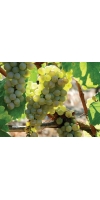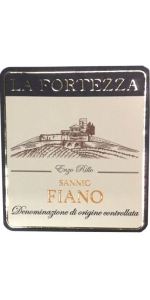Fiano

Fiano refers to a variety of a white wine grape type grown in southern Italy. Fiano grows typically in the region of Campania, although it also is cultivated in Sicily. In the region where the grape type is dominant, the wines crafted are strong white wines. Fiano is said to have been used in Rome and has a rich history in the region. The ancient Roman wine Apianum is said to have been crafted from the Fiano grape, and some wine bottles today feature the term “Apianum” on the label. Fiano is labeled as a classic grape variety of the region and the variety may have even been grown by the Greeks. The Fiano variety is typically small in size and has thick skin, thus producing a little bit of juice. Since the vines do not produce high yields, the variety is not seen as a very economical vine to grow. For the last several centuries, the variety has been on a decline; however, more wine growers in the region have invested in modern winemaking. This has resulted in an interest to revive some classic grape types that are native to the region. The Fiano grape has also been cultivated in Australia and Argentina.
Fortezza Fiano DOC Sannio is made from 100% Fiano - 20 years old
No oak.
Straw yellow color with light green reflections. A rich bouquet of white flowers with mineral notes, freshnesss and elegance, good acidity and good body.
Southeastern exposure with an altitude of 250-350 meters above sea level.
Planting density: 3,500 vines per hectare on average.
Training system: espalier with Guyot pruning.
Manual harvest in small crates end of September.
Winemaking in white in stainless steel tanks at controlled temperature.
Pairs well with seafood, grilled tuna, white meats.
Review:
" Clean and fruity with aromas of chopped apples, sliced pears and white peaches. Medium-bodied with a juicy, simple and refreshing palate. Drink now.”
- James Suckling (August 2022), 90 pts
- back
Selected Options
Grape Types
Categories
Pricing
Countries
Regions
Grape Types
Wineries
Organic/Free Shipping
All older vintage wines have been purchased from a single collectors cellar. Pictures can be requested before shipment.
A wine for two seasons. During the winter, heat the wine already infused with spices to enjoy by the fire on a cold evening. Just pop the cork and heat for a nice cozy treat. In the summer, try chilling this wine and add some citrus fruits and apples to create a new favorite sangria recipe.





